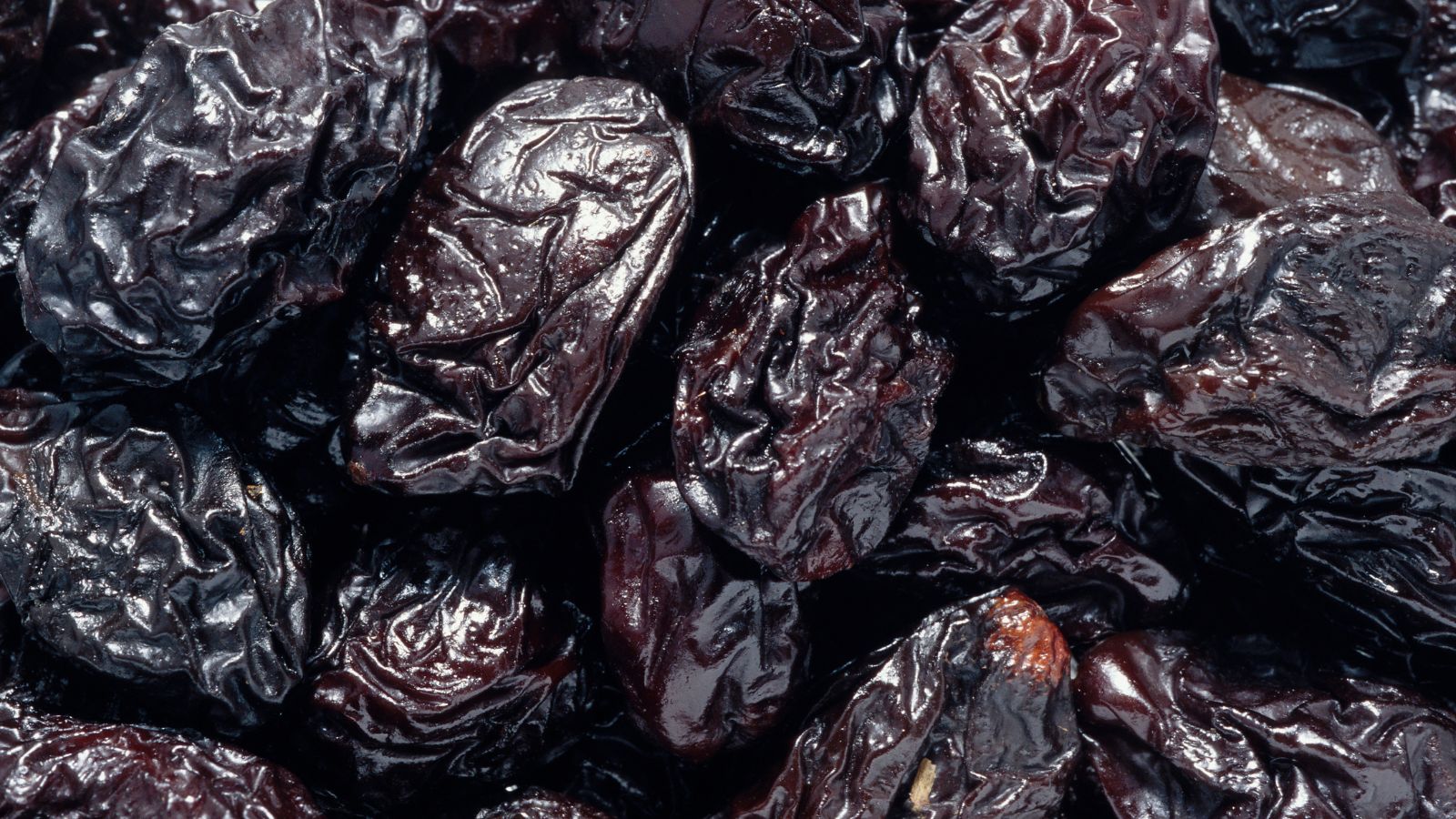
Is a Prune a Dried Plum? What You Didn’t Know About This Fruit
Photo Credit: Canva Pro
Is a Prune a Dried Plum? Yes, but there's more to the story, though. What's the difference between a prune and a plum?
This article tells you how many prunes you should eat every day and even which brands to buy. There are clear, simple answers in this guide, whether you want to know about the health benefits or find the best snack. Let's learn everything we can about plums and prunes.
Is a Prune a Dried Plum?
Photo Credit: Canva Pro
Yes, a Prune Is a Dried Plum – Here’s Why
A prune is just a certain kind of plum that has been dried out. The European plum is the species Prunus domestica that gives us most prunes. When they dry out, they turn into prunes that are chewy and last a long time.
-
Prunes dried plums: Made by removing water from ripe European plum varieties
-
Not all plums: Only certain types like the French prune are suitable
-
Fresh plums vs dried prunes: Drying concentrates nutrients and natural sweetness
-
California prunes: The majority come from California prune growers using plum trees cultivated for drying
-
Dried prunes: Offer a rich flavor, unlike the juicy nature of fresh plums
What Makes a Plum Become a Prune?
Not all plums are suitable for drying—varieties like the French prune (a cultivar of Prunus domestica) are specifically bred for their drying quality. If you want to dry these fruits out, you can use their firm flesh and low moisture.
-
Prune trees: Grown mainly in California and Europe
-
Dried fruit qualities: Less water, more fiber and sugar concentration
-
Stewed prunes: A popular preparation of dried prunes to soften texture
-
California prune growers: Cultivate prune trees specifically for their drying potential
-
European plum: Preferred variety for drying into prunes
Why Are Prunes a Laxative but Not Plums?
Photo Credit: Canva Pro
The Sorbitol and Fiber Combo in Prunes Packs a Punch
Prunes naturally stimulate bowel movements due to their concentrated levels of sorbitol and dietary fiber, which result from the water removal during drying.
-
Soluble fiber: Slows digestion and adds bulk to stool
-
Dietary fiber: Promotes gut health and regular bowel movements
-
Sorbitol: A natural sugar alcohol found in dried fruit that softens stool
-
Prunes dried plums: Contain higher fiber per gram than fresh plums
-
Promoting regular bowel movements: A known benefit of eating prunes
It’s Not Magic – It’s Quantity and Concentration
It does make a difference that people eat more prunes than plums at once. Prunes are easier to handle, smaller, and have more fiber and sugar than other fruits.
-
Fresh plums: Often eaten in small amounts, reducing laxative effects
-
Dried fruit: Smaller portions can contain more sugar and fiber
-
Dried grapes vs prunes: Both dried, but prunes are higher in fiber
-
Functional food: Prunes act like a natural remedy due to their properties
-
Bowel movements: Improved by both the volume and concentration of prunes
How Many Prunes Should You Eat Per Day for Weight Loss?
Photo Credit: Canva Pro
The Sweet Spot: 4 to 6 Prunes Daily
Eating four to six prunes every day can help you keep your weight in check and keep your digestive system healthy. Their fiber makes you feel full, which stops you from wanting to snack or eat more.
-
Dietary fiber: Aids satiety and supports digestion
-
Bone health: Regular eating prunes may preserve bone density
-
Gut health: Supported by natural compounds in prunes
-
California prunes: Known for consistency in quality and nutrients
-
Chewy texture: Makes them satisfying and long-lasting as a snack
What Happens If You Eat Too Many?
You can get sick if you eat too many prunes. Sorbitol and fiber are good for you, but too much of them can make you feel uncomfortable and bloated.
-
Prune juice: Easier on digestion but still needs moderation
-
Dried fruit: Always best in moderation due to sugar content
-
Blood pressure: It may benefit from the potassium content in prunes, but moderation is advised due to their natural sugar content
-
Stewed prunes: A gentler alternative for those sensitive to raw prunes
-
Functional food: Even healthy options need portion control
Are Sunsweet Dried Plums the Same as Prunes?
Photo Credit: Canva Pro
Yes, It’s the Same Fruit – Just Packaged Differently
Prunes are typically dried plums processed in climate-controlled dehydrators to preserve nutrients and ensure consistency. The business uses plums that have been specially chosen and grown to be dried. These are picked when they are very ripe and then dried in climate-controlled tunnels to keep the nutrients and texture.
-
Simply dried plums: Same as prunes, just rebranded for broader appeal
-
Prunus salicina vs prunus domestica: Sunsweet uses prunus domestica, ideal for prunes
-
Higher sugar content: Comes from the natural drying process, not added sugar
-
Chemical composition: Concentrated due to dehydration, enhancing flavor and benefits
-
Food science: Confirms no difference in nutrition between “dried plums” and “prunes”
Why Sunsweet Uses the Term ‘Dried Plums’
People used to think "prunces" were out of date. Sunsweet and other brands use the term "dried plums" to get the attention of younger people. It's not a change to the product; it's a marketing plan.
-
Grocery stores: May label them either way, depending on branding
-
Potential health effects: Remain the same regardless of label
-
Favorite recipes: Stews, smoothies, baked goods can use either term
-
Critical reviews: Show consumer preference improves with rebranding
-
Other dried fruits: Like raisins and peaches, undergo similar drying without renaming
What FullyHealthy Can Do for You
AIP, Gluten-Free & Allergen-Free Shopping Made Easy
FullyHealthy is a specialty online store that sells clean-label goods, such as dried fruit. It's geared toward people who have to follow certain dietary rules, like AIP or gluten-free requirements.
-
Organic Dried Plums: Sourced for clean processing, suitable for restricted diets
-
Grocery stores: Often lack clear allergen-free labeling—FullyHealthy fills the gap
-
Vitamins: Products like dried plums help boost nutrient intake for limited diets
-
Food science: Supports dried plums as a safe, nutrient-rich snack
-
Potential health effects: Labeled clearly to aid diet planning
Try Made in Nature Organic Dried Plums
FullyHealthy provides Produced by Nature's organic dried plums—just fruit, no fillers. If you want a healthy, naturally sweet snack, these prunes are perfect for you.
-
Simply dried plums: Only ingredient is organic prunes
-
Other dried fruits: Available, but these are specifically AIP-compliant
-
Favorite recipes: Use them in salads, muffins, or enjoy as-is
-
Sorbitol content: Natural and helpful for digestion when eaten in moderation
-
Peaches, raisins: Also sold but prunes stand out for bone health and gut benefits
Final Thoughts
Prunes are more than just dried plums; they're a healthy food that's full of fiber, potassium, and antioxidants. They're a good addition to your diet whether you eat them for digestive health, to stop bone loss, or just as a snack. Prunes are still a natural choice.
You can find them in orchards and grocery stores. In contrast to figs, prunes are known to help with digestion and bone health. They are even better for you when eaten with nuts or seeds.
FAQs
Are prunes better than figs for digestion?
Yes, prunes have higher sorbitol and fiber levels than figs, which supports gut health and regular bowel movements.
Can prunes help with bone loss?
Yes, Some research suggests that regular prune consumption may help support bone health, particularly in postmenopausal women, though more studies are needed. They’re rich in potassium and support bone health naturally.
Do prunes contain potassium like bananas?
Yes, prunes are a great source of potassium. A serving helps manage blood pressure and muscle function.
Where do prunes come from?
Prunes come from orchards where prune plums are harvested and dried. Many are grown in California.
Can I eat prunes with seeds or nuts?
Prunes are usually pitted, but yes, they pair well with seeds or nuts for a fiber-rich, energizing snack.

Leave a comment